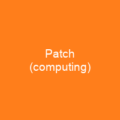The Raspberry Pi: A Miniature Giant in Computing
Imagine a computer so small it could fit in your pocket yet powerful enough to run complex software and applications—this is the essence of the Raspberry Pi. Developed by the Raspberry Pi Foundation with Broadcom, this series of single-board computers has revolutionized how we think about computing.
The Birth and Evolution
Back in 2008, when the Raspberry Pi Foundation was established as a private company, registered as a charity in 2009, little did they know that their educational initiative would become a global phenomenon. The first model, launched in 2012, marked the beginning of an incredible journey. Over time, with the formation of Raspberry Pi Ltd in 2012 and its name change to Raspberry Pi in 2021, the series has evolved into a powerhouse of innovation.
From Education to Industry
The Raspberry Pi began as an educational tool but quickly found its way into various fields. Its low cost and modularity have made it a favorite among hobbyists, developers, educators, and even businesses. The project’s success is evident in the fact that by 2015, the Raspberry Pi became the best-selling British computer.
Hardware Evolution
The Raspberry Pi series has seen numerous upgrades over the years. From the first-generation boards featuring ARM11 processors to the latest models like the Raspberry Pi 5 with a clock speed of 20% faster than its predecessor, each iteration brings new features and improvements. The Raspberry Pi Zero, Pico, and their successors have also expanded the possibilities for physical computing and microcontroller applications.
Performance and Specifications
The performance of these boards ranges from 700 MHz to 2.4 GHz, with varying amounts of RAM from 256 MB to 8 GB. The video controller supports a wide range of resolutions, making it suitable for various applications. Networking features include Ethernet ports, Wi-Fi adapters, and Bluetooth capabilities, enhancing its connectivity options.
Software Ecosystem
The Raspberry Pi’s software ecosystem is vast and diverse. It runs on operating systems like Raspberry Pi OS (formerly Raspbian), Ubuntu, Windows 10 IoT Core, and various Linux distributions. The availability of third-party applications and development tools makes it a versatile platform for both beginners and professionals.
Commercial Applications
Beyond its educational roots, the Raspberry Pi has found commercial success in home automation, industrial automation, and even as a telematics unit in vehicles. Its robust community support and open-source nature have driven innovation across multiple industries.
The Future of Computing
As we look to the future, the Raspberry Pi continues to evolve with new models like the Raspberry Pi 5 and its successors. With improvements in hardware and software features, it remains a cornerstone in the world of computing, inspiring both young and old alike.
The Conclusion
In conclusion, the Raspberry Pi has transformed from an educational tool into a versatile platform that powers innovation across various sectors. Its journey is a testament to the power of open-source technology and community-driven development. As we move forward, the possibilities for this tiny yet mighty computer are endless.

You want to know more about Raspberry Pi?
This page is based on the article Raspberry Pi published in Wikipedia (retrieved on December 9, 2024) and was automatically summarized using artificial intelligence.







